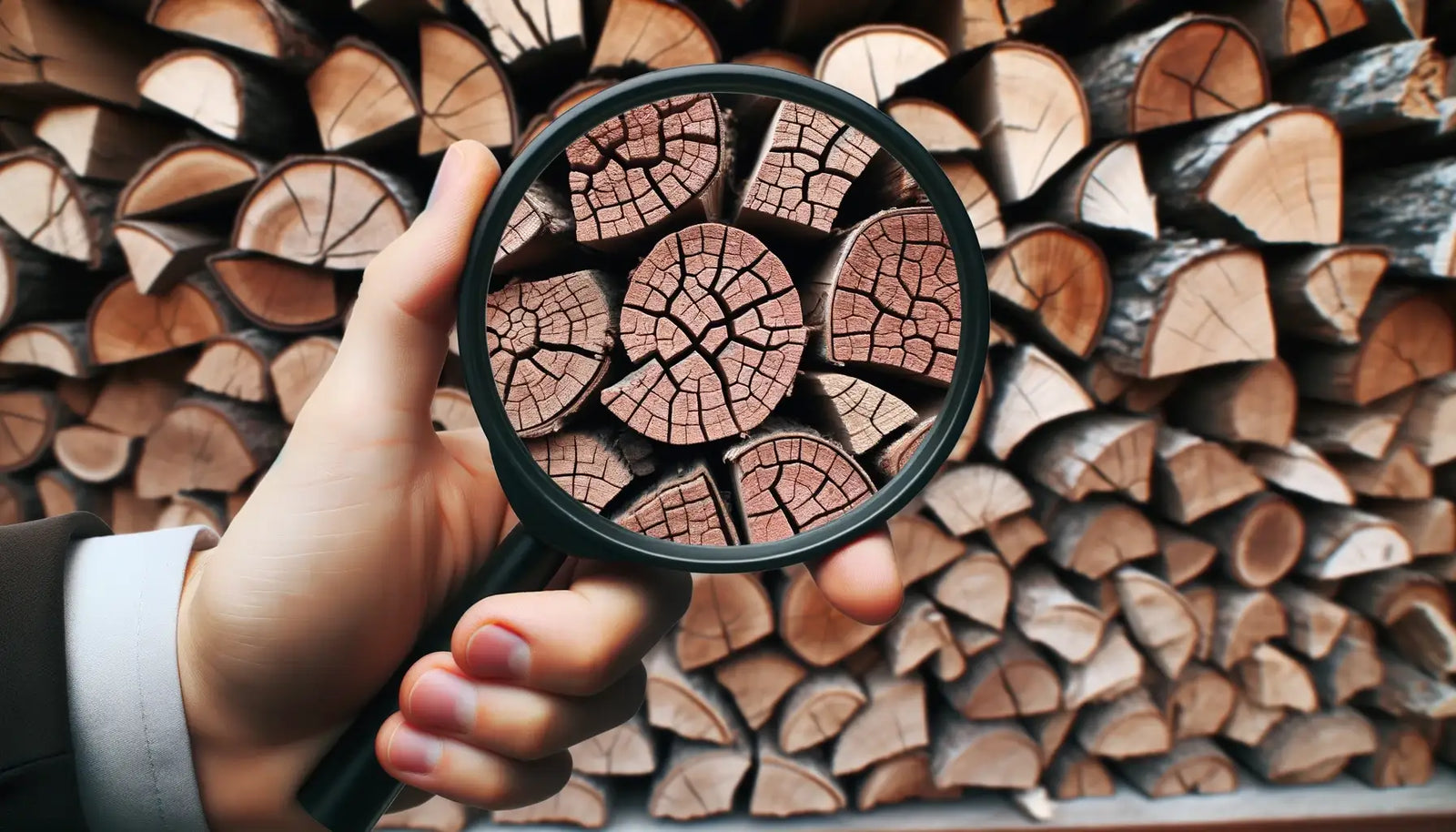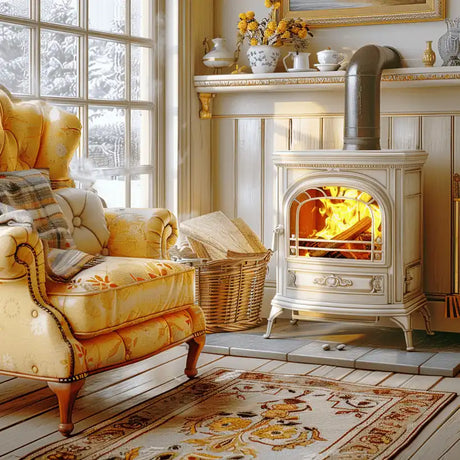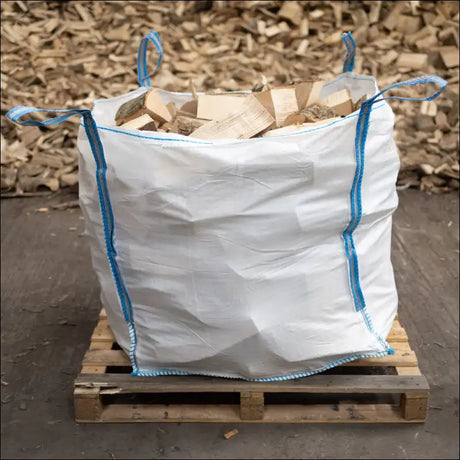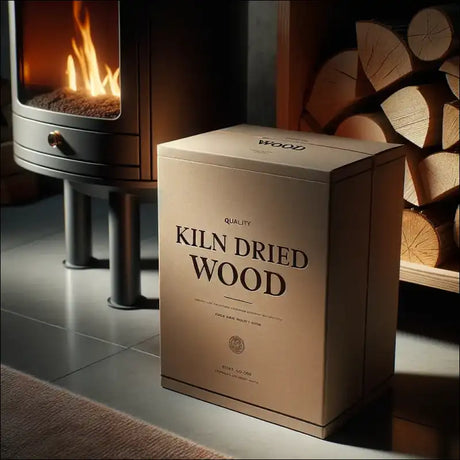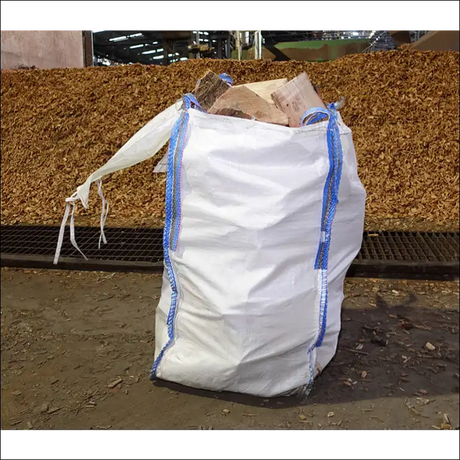Many people assume that drier firewood is always better for burning. However, there is a point where firewood can become too dry and actually lead to less than ideal fire conditions. This article will examine whether firewood can be overly dried out, the ideal moisture content for firewood, and how to manage moisture levels for the best burning experience.
Can Firewood Be Overly Dried Out?
Yes, it is possible for firewood to become too dry. When firewood has an extremely low moisture content below 15%, it can start to have negative effects when burned.
Some key problems that can occur with overly dried out firewood include:
- Fast, inefficient burning - Bone dry firewood will burn very quickly and produce less heat output than wood with some moisture. The fire will race through the logs too fast to extract full heat value.
- Increased risk of flames and sparks - Overly dried wood catches fire quicker and can lead to more flaming, sparking, and risk of embers escaping a fireplace or stove. This poses a potential fire hazard.
- More air pollution - Drier wood tends to smolder and create more smoke. This leads to reduced combustion efficiency and increased particulate emissions.
- Difficulty controlling the fire - Without any moisture to slow it down, extremely dry firewood can be hard to manage in terms of adjusting burn rates and temperatures.
- Less coaling effect - Dry wood produces less long-lasting coals and embers compared to wood with higher moisture. This reduces the radiant heating effect.
- Faster seasoning cracks - Very low moisture content causes wood to dry out too rapidly. This can lead to increased splitting, checking, and cracking compared to more gradual seasoning.
- Increased cost - Over-drying firewood with commercial kilns takes extra time and energy, resulting in higher prices. Air-dried firewood costs less.
So while drier wood is generally considered better for burning, there is a "too dry" point where the negatives start to outweigh the benefits. The ideal moisture range is a balance between dry enough to burn efficiently but retaining some moisture to aid manageable, clean-burning fires.
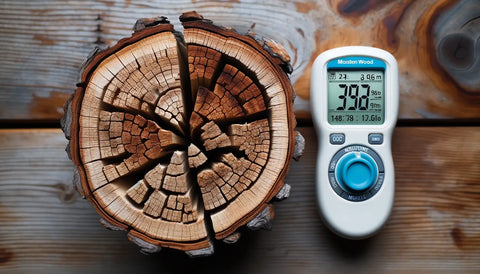
What is the Ideal Moisture Content for Firewood?
Most experts recommend a moisture content range of 15-20% as ideal for burning firewood. Here's why this moisture range provides the best properties:
- Burns efficiently - At 15-20% moisture, the wood will combust thoroughly while producing good heat output. This moisture level is low enough for clean burning but high enough to maximize fire heat.
- Easy to control - Wood will light readily but the fire progresses at a manageable pace for controlling temperatures. Possessing some moisture slows the pace for better control.
- Produces lasting coals - With some moisture remaining, the wood breaks down into long-lasting coals that provide continued radiant heat.
- Low smoke output - Firewood in the 15-20% range results in relatively clean and efficient combustion with minimal smoke produced after initial ignition.
- Limits risk of sparks/flames - The controlled burn rate helps reduce the chance of dangerous sparks and flare-ups compared to tinder-dry wood.
- Prevents excess cracking - At 15-20% moisture, firewood will season and dry gradually without excessive checking/cracking compared to very low moisture levels.
- Lower cost than kiln drying - Air drying firewood to 15-20% moisture is more affordable than extended kiln drying to extremely low moisture contents below 10%.
In summary, the 15-20% moisture range provides an optimal balance of dryness for efficient burning along with some residual moisture to aid better fire management and performance. This moisture level can be achieved through air drying seasoned firewood for 6-12 months.
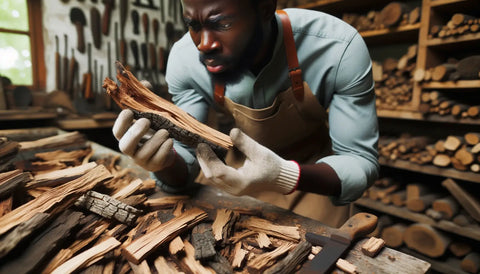
Tips for Managing Moisture Levels in Firewood
Here are some useful tips for ensuring your firewood moisture levels stay in the ideal 15-20% range:
- Test the moisture - Use a moisture meter to test a split log's moisture content. This gives you an accurate reading to determine if the wood is too wet, too dry, or just right for burning.
- Air dry for 6-12 months - Seasoning firewood for one full summer or up to 1-2 years is generally sufficient for reducing moisture to 15-20%.
- Stack wood off the ground - Stack wood on pallets or sleepers to allow airflow to accelerate drying time. This prevents direct ground contact.
- Cover the top, but leave sides open - A waterproof top cover protects from rain but open sides enable airflow. A wood pile cover is useful.
- Split logs to 6 inches or less - Smaller splits expose more surface area to allow moisture to dissipate from the inner wood fastest.
- Store wood in a sunny, dry, well-ventilated area - An open carport, woodshed, or covered area is ideal for promoting airflow and drying.
- Bring wood indoors/undercover 1-2 weeks before burning - Short-term storage inside further reduces moisture prior to burning.
- Avoid over-drying with extended kiln times - Use kilns judiciously to reduce moisture to 15-20%. Don't over-dry to extremely low moisture contents under 10%.
- Mix in some less seasoned wood - Adding unseasoned logs to burned wood creates longer burn times. Only use slightly wetter wood.

Following these guidelines helps ensure your firewood maintains a moisture content in the sweet spot of 15-20% that leads to optimal burning performance. Having wood that's too dry or too wet can negatively impact your fire. But with proper seasoning and moisture management, you can achieve clean, efficient fires. Check your wood's moisture content regularly and make adjustments to your drying and storage methods as needed. With practice, you'll be burning logs at the perfect moisture levels.
Frequently Asked Questions about Firewood Moisture Content
Can firewood purchased in summer be too dry?
Yes, firewood bought in summer can potentially be overly dried out below ideal moisture levels. Always test any purchased wood's moisture content rather than assuming its suitability. Even summer-purchased logs should still be around 15-20% moisture.
How long does it take for firewood to become too dry?
It depends on the climate, storage methods, and type of wood, but firewood can become overly dry within as little as 2-3 months in very hot, arid, and breezy conditions with uncovered storage. Storing it covered and shaded will prevent over-drying.
Do dry logs burn faster or slower?
Extremely dry firewood with less than 15% moisture will burn very fast with a quick, intense flame. Wood that has some more moisture at 15-20% burns at a more controlled, gradual pace. Limited moisture slows the burn rate.
What happens if you burn overly dry firewood?
Overly dry firewood will burn fast, produce excess sparks and flames, create more air pollution, result in less heat output, and make the fire much harder to control. There is an increased risk of fire hazards.
Does very dry firewood pop and crackle more?
Yes, extremely dry logs are more likely to crackle, spark, and pop when burnt. Some moisture inside the wood leads to more muffled, gentle sounds rather than loud pops and sparks. Limited moisture reduces the fire intensity.
How can you tell if firewood is too dry?
Using a moisture meter provides the most accurate way to test if firewood is too dry or still within the ideal moisture range. Visible signs include excessive checking/cracking, light weight, hollow sound when hit together, and feeling very dry to the touch.
Conclusion
While dry firewood is preferable for clean burning, logs can become overly dried out below ideal moisture levels. Wood with extremely low moisture content under 15% can burn too quickly, create fire hazards, increase air pollution, and reduce heat output. The ideal moisture range is around 15-20%. Seasoning firewood for 6-12 months typically reaches this perfect moisture balance. Check your firewood's moisture with a meter and use tips like covering the top of the stack to prevent over-drying. With practice balancing drying and moisture levels, you can achieve perfect fires burning at peak performance.

